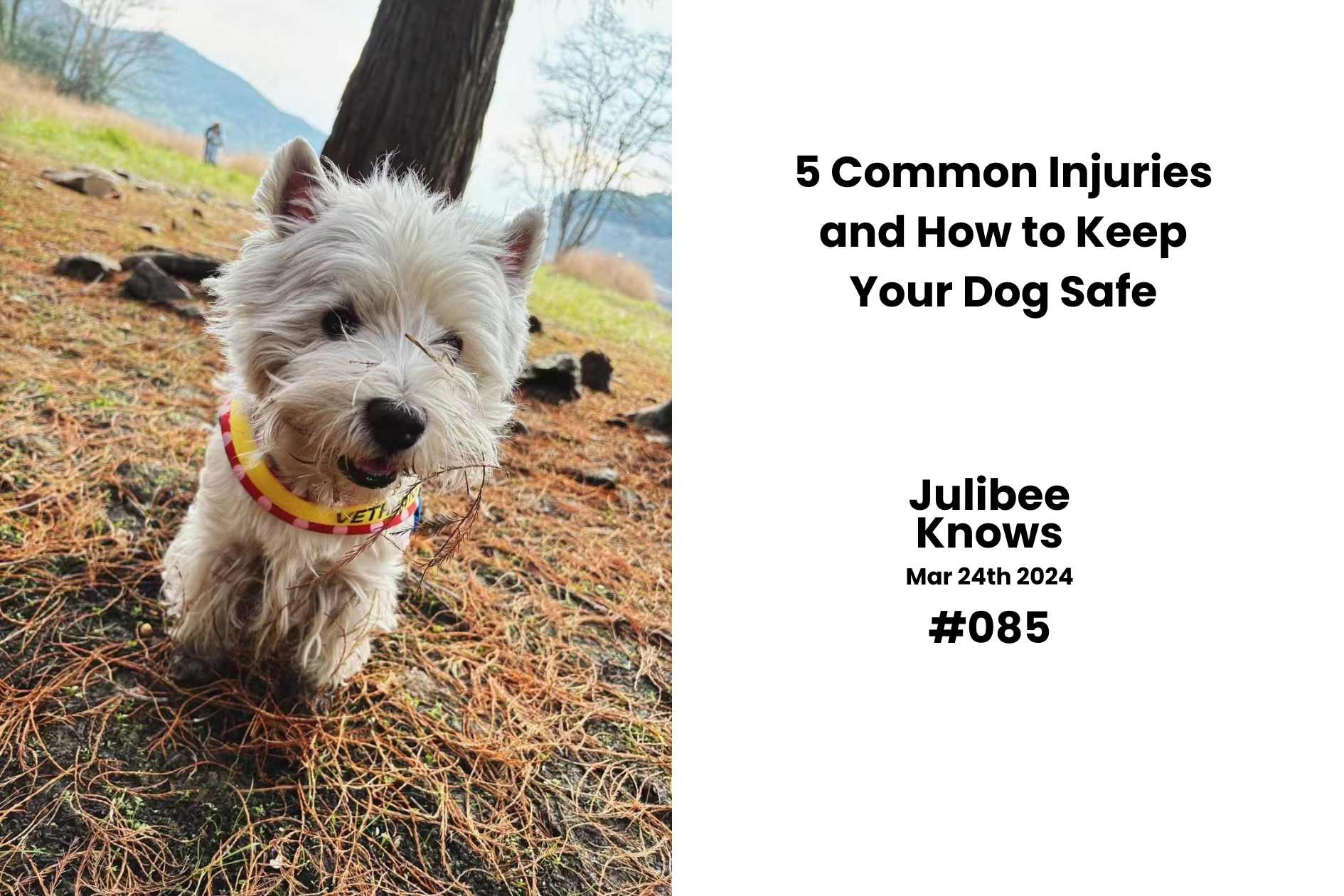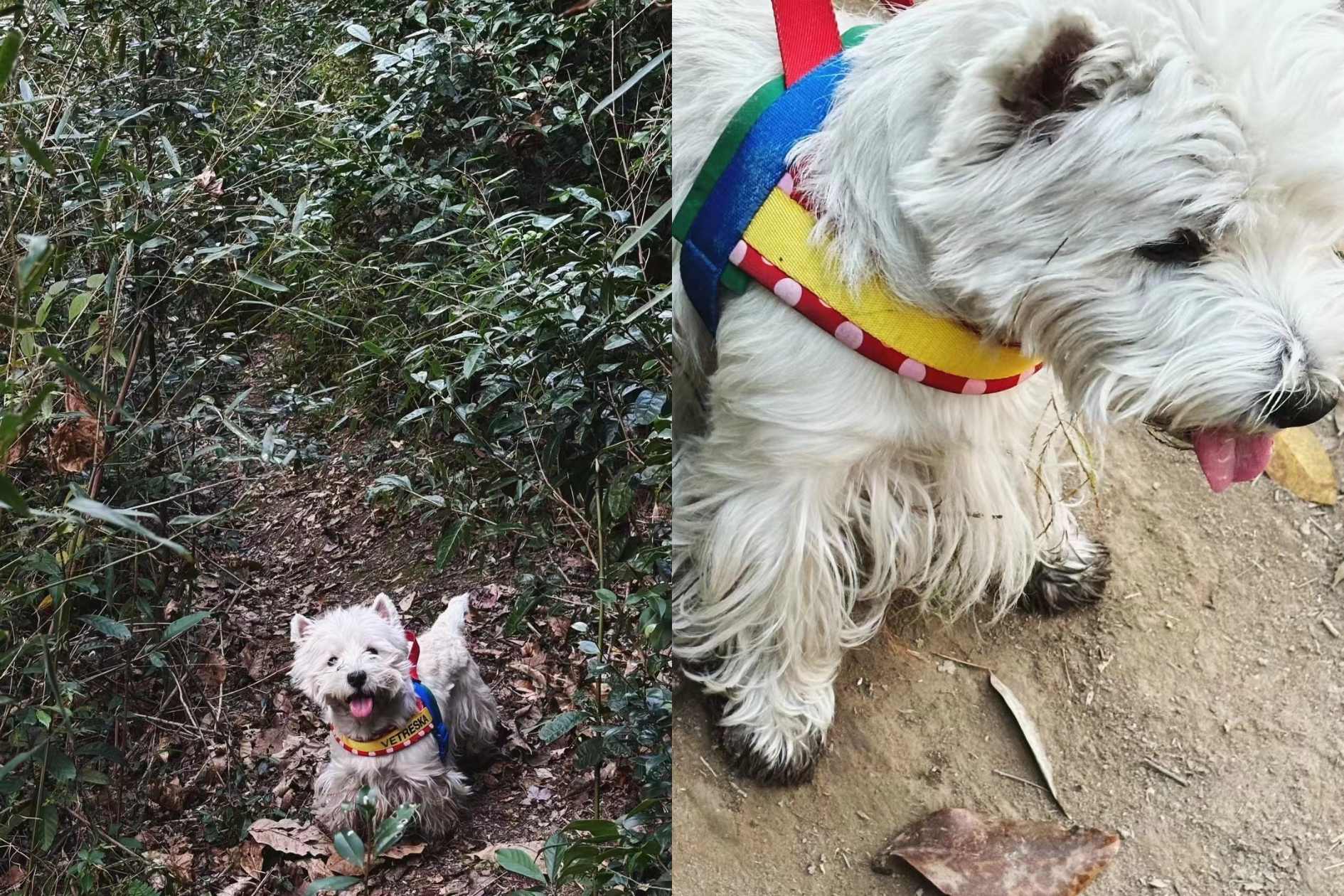
5 Common Dog Hiking Injuries and How to Keep Your Dog Safe
Explore the great outdoors with your furry friend! Learn how to prevent 5 common dog injuries while hiking, including paw pad injuries, heatstroke, dehydration, sprains, and cuts. Find valuable tips for keeping your dog safe...
Hiking with your furry friend is a fantastic way to get exercise and enjoy the great outdoors together. However, it's crucial to be aware of the potential risks involved and take steps to prevent injuries.

Here are five of the most common injuries dogs can experience while hiking, along with their symptoms, preventive measures, and treatment options:
1. Paw Pad Injuries:
These are the most frequent injuries dogs encounter while exploring the trails. They can be caused by various factors, including:
- Sharp objects: Rocks, thorns, and broken glass can easily puncture or tear paw pads.
- Hot surfaces: Pavement and sand can become scorching, especially during warm weather, leading to burns.
- Cold surfaces: Ice and snow can irritate paws or cause frostbite in extreme cases.
- Chemicals: Salt, de-icing agents, and other chemicals can cause irritation and dryness.
Prevention:
- Regularly trim your dog's nails to prevent them from getting caught on anything.
- Choose trails with softer surfaces like dirt or grass whenever possible.
- Avoid hiking during peak heat hours and provide shaded rest areas.
- Use dog boots for added protection on specific terrains or during harsh weather conditions.
- Carry paw balm or a pet-safe wipe to soothe minor irritations.
Symptoms:
- Limping or favoring one paw
- Licking or chewing at the paw
- Visible cuts, punctures, or burns
- Redness, swelling, or bleeding
Treatment:
- Clean and disinfect the wound with a mild antiseptic solution.
- Bandage the pawhttps://youtu.be/CgIjNJcIhDY?si=mF1MA2SsHyaoO2Zv if necessary to prevent further contamination or irritation.
- Seek veterinary attention for any deep or serious injuries, signs of infection, or persistent pain.
2. Heatstroke:
Heatstroke is a life-threatening condition that occurs when a dog's body temperature rises too high and they can no longer cool themselves down effectively.
Symptoms:
- Excessive panting and drooling
- Bright red or pale gums
- Rapid heart rate
- Vomiting and diarrhea
- Lethargy, weakness, or dizziness
- Seizures or unconsciousness (in severe cases)
Prevention:
- Never leave your dog unattended in a hot car, even for a short period.
- Choose trails with shade and access to water.
- Offer your dog frequent water breaks and encourage them to drink.
- Avoid strenuous activity during the hottest part of the day.
- Dogs with short snubs, thick fur, or health conditions are at higher risk and require extra precautions.
Treatment:
- Move your dog to a cool, shaded area immediately.
- Offer cool water to drink in small amounts.
- Wet your dog's fur with cool water (not ice) and fan them gently.
- Seek immediate veterinary attention for any suspected heatstroke case.
3. Dehydration:
Dehydration occurs when a dog loses more fluids than they are taking in. It's crucial to ensure your dog stays hydrated, especially during hot weather or strenuous activity.
Symptoms:
- Excessive panting
- Dry mouth and gums
- Lethargy and weakness
- Loss of appetite
- Sunken eyes
- Thickened saliva
Prevention:
- Carry plenty of fresh, clean water and offer it to your dog frequently, even if they don't seem thirsty.
- Consider bringing a portable water bowl for easy access on the trail.
- Monitor your dog's water intake and adjust the amount based on weather conditions and activity level.
Treatment:
- Rehydrate your dog with fresh, cool water in small amounts at first to avoid stomach upset.
- If your dog is severely dehydrated or vomiting, seek immediate veterinary attention.
4. Sprains and Strains:
These occur when muscles or ligaments are stretched or torn beyond their normal range of motion, typically due to:
- Slipping on wet surfaces
- Jumping from heights
- Sudden changes in direction
- Overexertion on challenging terrain
Symptoms:
- Limping or favoring one leg
- Difficulty getting up or down
- Swelling, tenderness, or pain at the affected area
- Decreased range of motion
Prevention:
- Warm up your dog with a light walk or jog before starting the hike.
- Choose trails appropriate for your dog's fitness level and age.
- Keep your dog on a leash in unfamiliar areas or challenging terrain.
- Monitor your dog's pace and allow them to rest frequently.
Treatment:
- Rest and limited activity are essential for healing. Confine your dog to a quiet area and avoid strenuous activities for 24-48 hours, as prescribed by your veterinarian.
- Apply cold compresses to the affected area for short intervals (10-15 minutes) wrapped in a towel to reduce inflammation. Never apply ice directly to the skin.
- Monitor your dog closely for any worsening symptoms like increased pain, swelling, or difficulty walking.
- Consult your veterinarian for any suspected fractures, severe pain, or lack of improvement within a few days. They may recommend pain medication, physical therapy, or further diagnostics if needed.
5. Cuts and Abrasions:
These are scrapes or wounds on the skin caused by various factors like:
- Sharp objects on the trail
- Rough terrain like rocks or gravel
- Bites or scratches from other animals
Prevention:
- Keep your dog on a leash in areas with potential hazards like dense brush or wildlife.
- Choose well-maintained trails free from sharp objects or debris.
- Regularly check your dog's fur and paws for any injuries.
Symptoms:
- Visible cuts, scrapes, or abrasions
- Bleeding
- Pain or discomfort
- Redness or swelling
Treatment:
- Clean the wound with a mild antiseptic solution and remove any debris gently.
- Apply gentle pressure to control any minor bleeding.
- Bandage the wound to prevent further contamination or irritation if necessary. Use a non-stick gauze pad and breathable bandage.
- Monitor the wound for signs of infection like redness, swelling, or pus.
- Seek veterinary attention for any deep or serious wounds, signs of infection, or excessive bleeding. Deep wounds may require stitches to close properly.
Conclusion:
By understanding these common injuries and taking appropriate preventive measures, you can significantly reduce the risk of your dog getting hurt while hiking. Always prioritize your dog's safety and well-being, and be prepared to adjust your plans based on their individual needs and limitations. Remember, a happy and healthy pup makes for a more enjoyable hiking experience for both of you!
Youtubers about hiking with dogs:
- Backpacking Deep into the Mountains with my Dog - Mt. Findlay by Forestry Forest
- My FIRST solo backpacking trip with my dog by Adventuring With Nala
- A Day in the Life Thru-Hiking with my Dog | Our daily routine on the Trail by Elli hikes
- The REALITIES of Backpacking with a Dog by Seagrass to Sassafras
- I Hiked Solo Across The Country With My Dogs (Continental Divide Trail Thru Hike 2021 in 3 minutes) by The Most Important Step


220 comments
CLIYyVTQt
xaAuIgkeEMywbX
nJjGctMaIsCYAQy
ozlWgPHJswONBVj
ACkJiFMUrWKOcTm
uSlcqeAhVJnbI